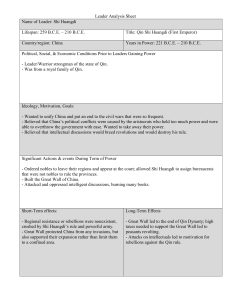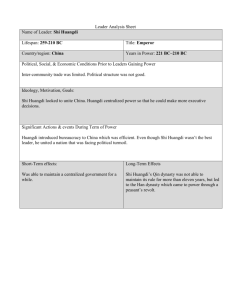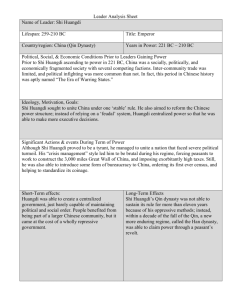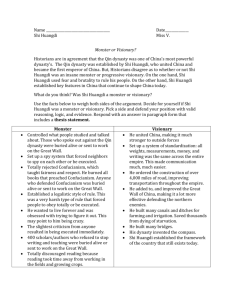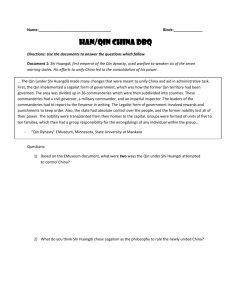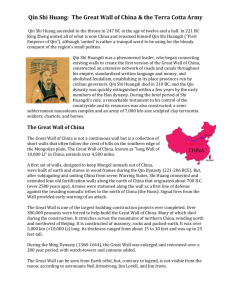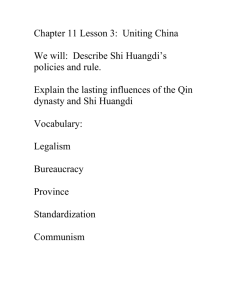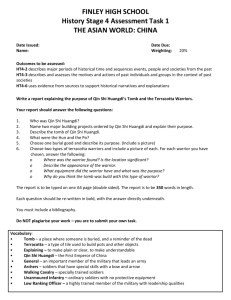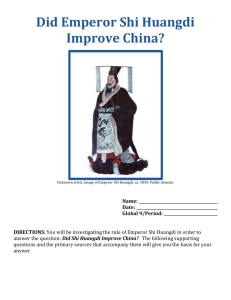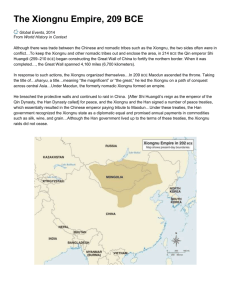Global1PostDBQQuestions
advertisement
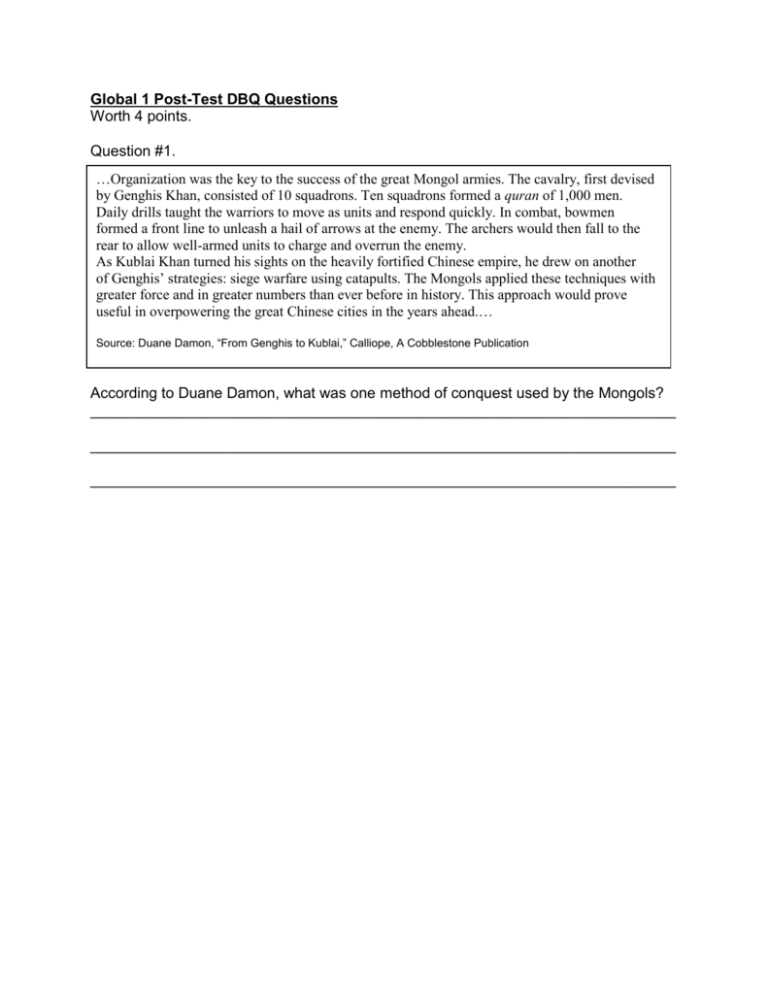
Global 1 Post-Test DBQ Questions Worth 4 points. Question #1. …Organization was the key to the success of the great Mongol armies. The cavalry, first devised by Genghis Khan, consisted of 10 squadrons. Ten squadrons formed a quran of 1,000 men. Daily drills taught the warriors to move as units and respond quickly. In combat, bowmen formed a front line to unleash a hail of arrows at the enemy. The archers would then fall to the rear to allow well-armed units to charge and overrun the enemy. As Kublai Khan turned his sights on the heavily fortified Chinese empire, he drew on another of Genghis’ strategies: siege warfare using catapults. The Mongols applied these techniques with greater force and in greater numbers than ever before in history. This approach would prove useful in overpowering the great Chinese cities in the years ahead.… Source: Duane Damon, “From Genghis to Kublai,” Calliope, A Cobblestone Publication According to Duane Damon, what was one method of conquest used by the Mongols? ______________________________________________________________________ ______________________________________________________________________ ______________________________________________________________________ Question #2. Leonardo da Vinci studies the anatomy of the human body while he apprenticed to Andrea Del Verrocchio. To learn about the body, he dissected and studied human corpses. Da Vinci was interested in the structure and the function of the various parts of the human body. His drawings reflect what he learned as he studied. According to the document, state one of Leonardo da Vinci’s contributions to science. ______________________________________________________________________ ______________________________________________________________________ ______________________________________________________________________ Question #3. Shi Huangdi, first emperor of the Qin dynasty, used warfare to weaken six of the seven warring states. His efforts to unify China led to the consolidation of his power. Based on this EMuseum document, what were two ways the Qin under Shi Huangdi attempted to control China? ______________________________________________________________________ ______________________________________________________________________ ______________________________________________________________________ Global 1 Post-Test DBQ Questions Answer Key Question #1 Score of 1: Award 1 credit for a method of conquest used by the Mongols according to Duane Damon Examples: use of a well-organized/well-trained army/cavalry/squadrons/bowmen/archers/trained troops; warriors were taught to move as a unit; engaging in warfare/attacking the enemy/first attacking with a front line of archers; use of well-armed units to charge/overrun the enemy; siege warfare/siege warfare using catapults/use of catapults Score of 0: Incorrect response Examples: well-trained navy; the Chinese empire was heavily fortified; 10 men made up a squadron • Vague response Examples: they organized; they turned their sights; they overran; a hail of arrows • No response Question #2 Score of 1: •States a contribution Leonardo da Vinci made to science as shown in this document Examples: he illustrated what a human skeleton was like; drew details of human anatomy; left notes about his dissection and study of human corpses; he left notebooks that detailed the structure and function of the various parts of the human body Score of 0: •Incorrect response Examples: he made human skeletons; was apprenticed to Andrea del Verrocchio; interested in structure; wrote backwards •Vague response Examples: he drew details; learned; he studied •No response Question #3 Score of 2 or 1: •Award 1 credit (up to a maximum of 2 credits) for each different way the Qin under Shi Huangdi attempted to control China based on this EMuseum document Examples: used war to weaken states/used war to unify China; implemented a Legalist form of government; created a bureaucracy/divided the area into 36 commanderies/subdivided commanderies into counties; civil governors or military commanders or imperial inspectors had to report to the Emperor in writing; made families that were grouped together responsible for the wrongdoings of any individual within the group; took all power from the former nobility; transplanted the nobility from their homes to the capital; used punishments and rewards to maintain order Note: To receive maximum credit, two different ways the Qin under Shi Huangdi attempted to control China must be stated. For example, the responses created a bureaucracy and divided the area into 36 commanderies are the same way since divided the area into 36 commanderies is a subset of created a bureaucracy. In this and similar cases, award only one credit for this question. Score of 0: • Incorrect response Examples: used war to strengthen six states; abolished the Legalist form of government; gave the nobility more power; the state had absolute control • Vague response Examples: had control over people; they governed; people were made responsible; made many changes; consolidated; units of 5–10 families • No response
